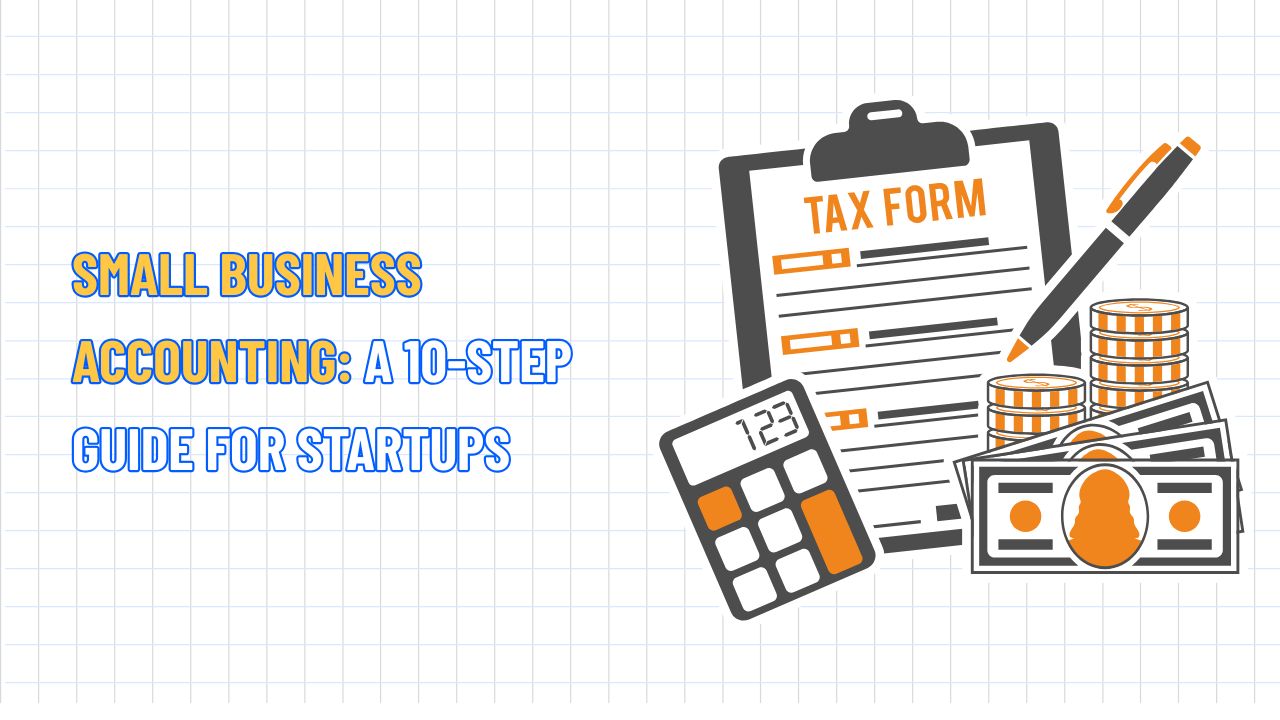Top 10 Strategies to Get Products Stocked in Retail Stores
Table of Contents Hide
Launching your product in retail stores is a pivotal milestone for any brand, marking a transformative step toward expanding your customer base, building credibility, and driving significant growth. However, to get products stocked in retail stores, brands must adopt a strategic and persistent approach. In this article, NextSky provides a detailed roadmap based on deep industry insight and proven strategies.

Top 10 strategies to get products stocked in retail stores
Step 1: Assess retail readiness
Before approaching retailers, prioritize strengthening your internal capabilities to ensure your business can meet the demands of wholesale and retail partnerships.
- Production capacity: Assess your ability to scale production for large wholesale orders without compromising direct-to-consumer (DTC) sales. Audit your supply chain to identify bottlenecks, such as raw material shortages or production delays, and pinpoint areas for improvement. For example, if you receive a 10,000-unit order, can you fulfill it on time without impacting your online sales?
- Profit margins: Wholesale often requires deep discounts of 40–50% off retail prices, so optimize your cost structure to maintain sustainable profits. If your DTC model yields a 60% gross margin, streamline operations to achieve 80–90% margins for wholesale efficiency.
- Marketing budget: Retail success depends on driving in-store sales through advertising, product trials, or media campaigns. Ensure you have sufficient funds to support these efforts post-launch.
- Product packaging: Retail packaging must meet strict store standards, including barcode requirements and size specifications, while also standing out visually on shelves. Invest in professional, eye-catching packaging that reflects your brand’s core values.
Pro tip: Utilize tools like Shopify’s inventory management software and analytics to coordinate DTC and wholesale channels seamlessly.
Read more: TOP 30+ Best Shopify Stores of a Year that You Shoudn't Miss
Step 2: Identify the right retailers
Not every retailer is the perfect fit for your product. Selecting the right partner is crucial to achieving maximum success.
- Brand alignment: Prioritize retailers whose core values and customer demographics align with your brand. For example, a sustainable cosmetics brand would thrive at Whole Foods rather than a mass-market chain like Walmart.
- Start small or aim big: Decide whether to begin with local boutique stores to build close relationships or target large chains for scale and growth. Local boutiques are often more accessible for new brands, while major retailers require robust infrastructure.
- Research retailer needs: Study a retailer’s current product lineup to identify gaps your product can fill. For instance, if a store lacks organic vegan snacks, your product could meet that demand.
Example: Heyday Canning Co. succeeded with Whole Foods by emphasizing premium-flavoured canned beans, a unique offering that complemented the retailer’s focus on high-quality, convenient foods.
Read more: Top Shopify Electronics Stores Inspiring Your Business
Step 3: Craft a compelling, unique selling proposition (USP)
Retailers receive countless pitches daily, so your product must stand out. Your USP should clearly articulate why it deserves a place on the shelf.
- Product differentiation: Highlight what makes your product unique, such as innovative ingredients, eco-friendly materials, or appeal to a specific audience (e.g., hypoallergenic products).
- Data support: Use sales data, customer reviews, or repeat purchase rates to prove market demand. For example, a 70% repeat purchase rate within 30 days signals strong consumer appeal.
- Competitor analysis: Understand how your product compares to competitors in terms of price, quality, and features. Retailers want fresh or superior products compared to their existing inventory.
Practical tip: Create a one-page sell sheet summarizing your USP, sales data, and product details. Include high-quality images to make your pitch memorable.
Step 4: Build relationships with retail buyers
Approaching buyers requires a strategic and relationship-driven approach.
- Research buyer contacts: Check retailer websites or call corporate offices to identify buyers for your product category. For large chains, find their category review schedules, which dictate when new products are considered.
- Leverage networks: Attend trade shows, industry events, or local business meetups to connect informally with buyers. For example, attending a trade show as a visitor first can gauge buyer interest before investing in a booth.
- Utilize digital platforms: Platforms like LinkedIn enable direct connections with buyers through InMail. Craft concise, professional messages that introduce your brand and request a meeting.
Example: Stoked Oats established a relationship with Costco through persistent email correspondence, beginning with a simple introduction and progressing to a formal pitch.
Step 5: Perfect your pitch
Your pitch is your critical opportunity to make a lasting impression. Keep it concise, value-focused, and aligned with the retailer’s business goals.
- Lead with value: Start with, “What are your goals for this category, and how can we help?” This shows you prioritize the retailer’s success, not just your own.
- Highlight benefits: Emphasize how your product drives sales, attracts new customers, or fills a gap. For example, “Our organic protein bars appeal to health-conscious shoppers, boosting repeat purchases.”
- Bring samples: Provide high-quality samples for buyers to test. Include a sell sheet or presentation deck that features key data, such as sales trends or customer testimonials.
- Be flexible: Be open to feedback on pricing, packaging, or order quantities. Retailers value partners willing to adapt to their needs.
Pro tip: Rehearse your pitch to keep it under 10 minutes, leaving time for questions and discussion.
Read more: 23+ Shopify Beauty Stores for Beginners That You Can't Miss
Step 6: Follow up strategically
- Send a thank-you: After a meeting, send a personalized thank-you email summarizing your pitch and any requested materials.
- Provide updates: Share news about new products, media coverage, or sales milestones to reinforce your brand’s momentum.
- Be patient: Retail processes often follow long cycles. Follow up tactfully every 2-3 weeks to avoid coming across as pushy.
Example: Simon from Stoked Oats emphasized that consistent follow-ups secured a meeting with Walmart by demonstrating commitment.
Step 7: Explore wholesale platforms
Online wholesale platforms can connect you with global retailers, reducing the need for direct pitches.
- Faire: Ideal for small businesses, Faire connects independent brands with retailers and integrates with Shopify for efficient order management.
- Alibaba: Suitable for bulk sourcing or connecting with international retailers, though it may require higher order volumes.
- Shopify Collective: Enables retailers to showcase your products on their stores while you handle fulfillment, providing a low-risk retail approach.
Practical tip: Optimize platform listings with high-quality images, detailed descriptions, and competitive pricing to attract retailers.
Step 8: Leverage trade shows
Trade shows are golden opportunities to meet buyers and showcase products.
- Prepare thoroughly: Invest in an eye-catching booth and bring a generous selection of product samples. Train your team to pitch confidently and engage visitors.
- Connect strategically: Focus on building long-term relationships rather than immediate sales. Collect buyer contact info for post-show follow-ups.
- Evaluate ROI: Trade shows can be costly, so research attendee profiles and past success stories to ensure alignment with your goals.
Example: A cosmetics brand utilized trade show data to demonstrate consumer demand, ultimately securing a contract with a regional retailer after exhibiting at a beauty expo.
Step 9: Consider alternative retail channels
If traditional wholesale isn’t suitable, consider exploring alternative methods to get products into stores.
- Pop-up shops: Test products in a temporary retail space using Shopify POS to manage in-person sales, generating buzz and real-world feedback.
- Dropshipping: Partner with online retailers to sell your products without holding inventory, reducing your upfront costs.
- Own stores: Open a physical store to control the customer experience, serving as a testing ground for larger retail partnerships.
Step 10: Drive in-store success
Securing shelf space is just the beginning. Your product must sell to maintain its place.
- Proactive promotion: Use social media, email marketing, and paid ads to drive customers to stores carrying your product. Share store locations, promotions, and inspiring brand stories to spark demand.
- Point-of-sale support: Host in-store trials, offer samples, or create eye-catching displays to attract attention and encourage product interaction.
- Track performance: Regularly review sales data and retailer feedback to refine strategies. Adjust packaging, pricing, or messaging as needed to optimize performance and secure shelf space.
Example: Kat from Heyday Canning Co. noted that in-store product trials were critical to boosting sales at Whole Foods, allowing customers to experience the product firsthand.
Where do retailers source products?
Retailers source products through various channels, each with unique advantages:
- Manufacturers: Direct sourcing ensures access to the latest products and simplifies inventory management, particularly for online retailers utilizing dropshipping.
- Wholesalers: Bulk purchasing at discounted prices enables retailers to offer competitive pricing and expand their product catalogues.
- Distributors: Specialists in specific categories provide curated products and efficient logistics.
- Trade shows: These events connect retailers with suppliers, offering opportunities for direct negotiations.
- Online marketplaces: Platforms like Alibaba and Faire provide diverse catalogues and support low-risk dropshipping.
Insight: Retailers prioritize suppliers who offer reliable delivery, competitive pricing, and products that align with their brand and customers. Understanding this helps you position your product effectively.
Best practices for retail success
Maximize your chances of success with proven strategies:
- Focus on quality: Ensure products meet high standards through regular quality checks and customer feedback.
- Negotiate smartly: Use data to secure favourable terms, such as flexible payment schedules or lower minimum order quantities.
- Build strong relationships: Treat retailers as partners, not just clients. Consistent, reliable communication fosters trust.
- Leverage technology: Use AI-driven analytics or platforms like Shopify to optimize pricing, inventory, and marketing efforts.
Getting your product onto retail shelves is a challenging yet rewarding journey. By applying NextSky’s insights—identifying retailer needs, backing pitches with data, and building lasting relationships—you can position your product for success and drive sustainable growth in the competitive retail landscape.










